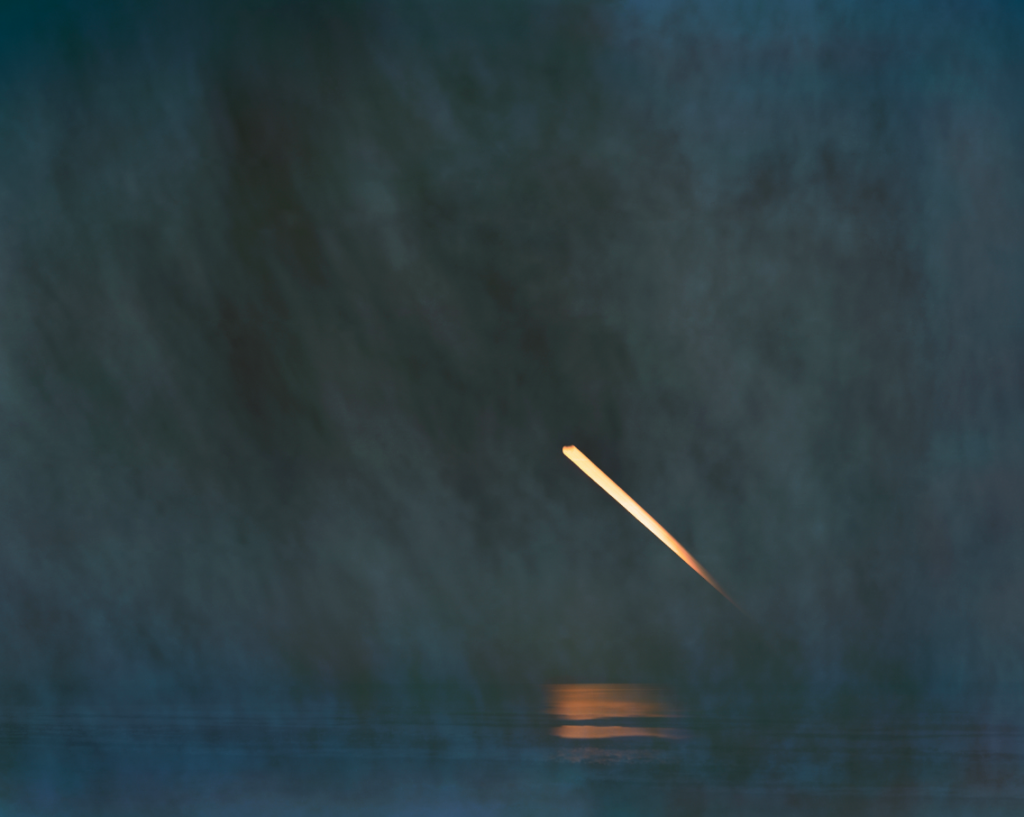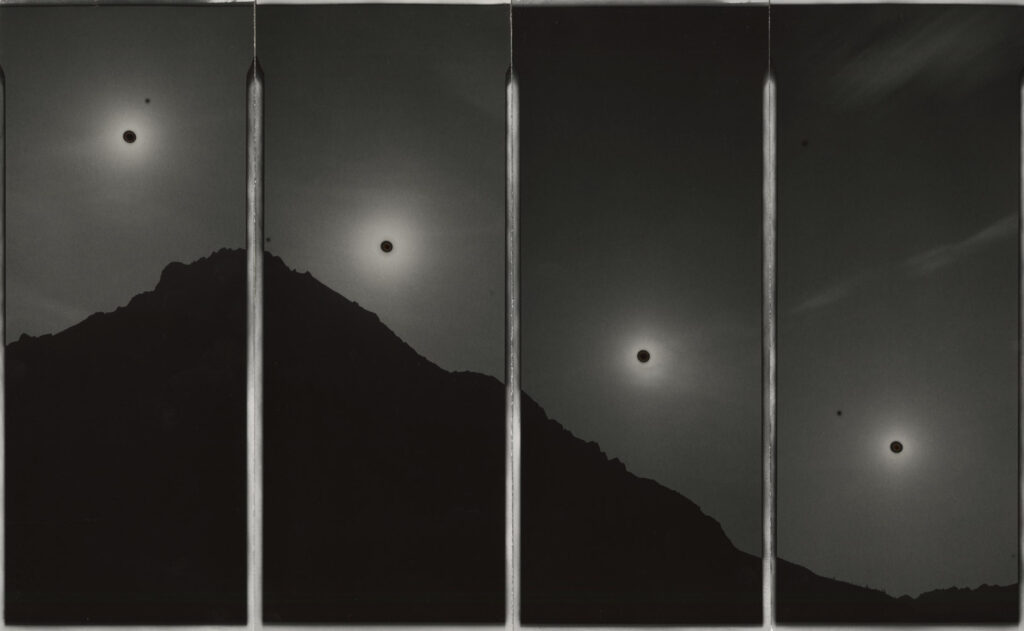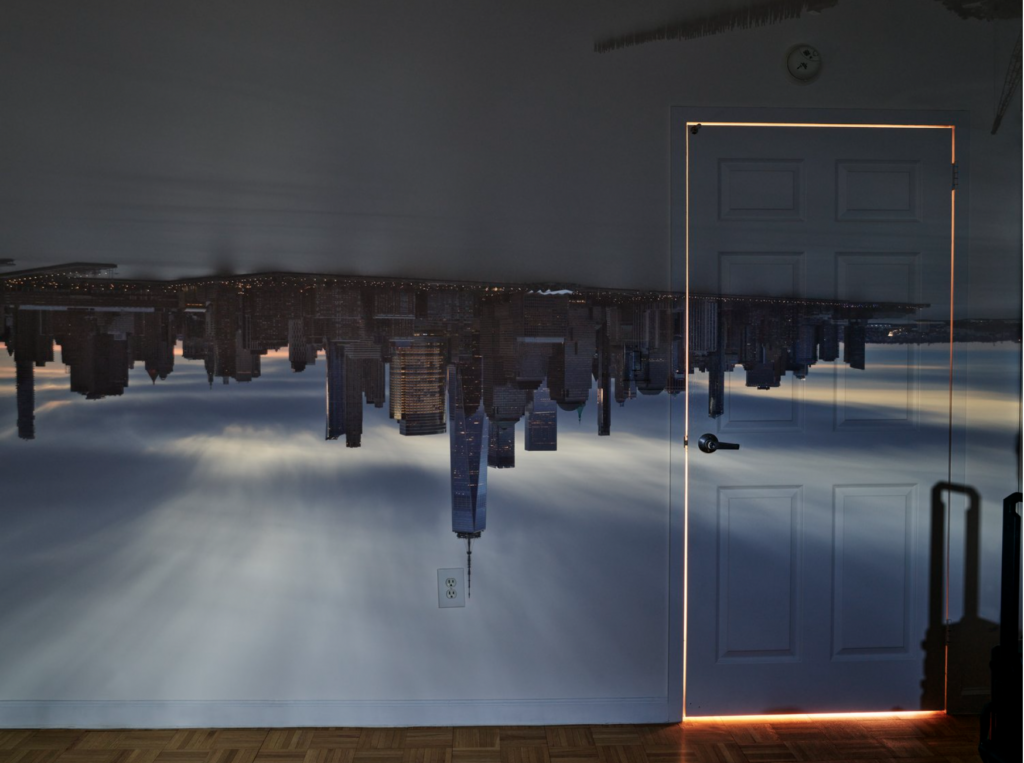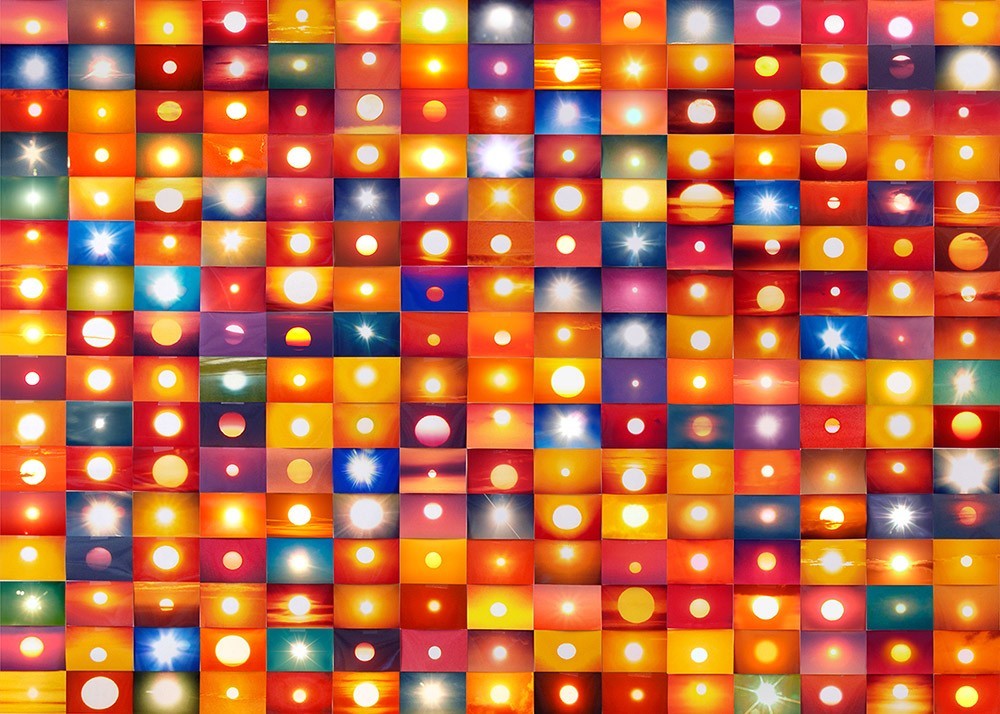Writing with Light: Photography and the Sun
Posted on March 26, 2024
On April 8, 2024, a total solar eclipse will cross North America, passing over Mexico, the United States, and Canada, including portions of the Greater Cincinnati area being directly on the southern limit of the path of totality. If you’re planning to view this exciting celestial event, proper eye protection is key. One method of safely viewing the total solar eclipse is with a camera obscura or pinhole projector. We’ve rounded up a list of some photographers who take into consideration the profound relationship between photography and the sun as well as a tutorial on how to make a pinhole projector.
Camera Obscura
On April 8, 2024, a total solar eclipse will cross North America, passing over Mexico, the United States, and Canada, including portions of the Greater Cincinnati area being directly on the southern limit of the path of totality. Depending on where you are in this path of totality, the total solar eclipse will take place roughly between 3:09–3:17pm EST, as the shadow of the moon moves directly in front of the sun and completing blocks out the sun’s light. Proper eye protection, however, is vital if you plan to view this exciting celestial event—this can be done with a special filter, goggles, or glasses that meet the global safety standard and are ISO 12312-2 certified or, our method of choice: with a homemade camera obscura.
A camera obscura is, traditionally, a darkened room with a small hole or lens at one side through which an image is projected onto a wall or table opposite the hole. It can also refer to constructions such as a box in which an exterior image is projected inside. Beginning in ancient China and ancient Greece, the camera obscura was used as a means to study solar eclipses without the risk of damaging the eyes by looking directly into the sun.
With a just few simple household items, you can make a pinhole camera that allows you to view the solar eclipse safely and easily from anywhere. Check out this tutorial from NASA.
Photographers and the Sun
Photography has been dependent on light since its inception and the word “photography” means “writing with light.” Many photographers take into consideration the profound relationship between photography and the sun or have even explicitly used a camera obscura in their works. Let’s take a look at some of those artists:

Barbara Bosworth, Moon Setting into Fog Bank over Cape Cod Bay, Morning of the Total Lunar Eclipse, 2007, printed 2023. Inkjet print; sheet: 142.2 x 177.8 cm (56 x 70 in.); frame: 152.4 x 188 cm (60 x 74 in.)
Barbara Bosworth is a photographer known for large-format images that explore both “overt and subtle relationships between humans and the rest of the natural world.” Currently, her work is on view at the Cleveland Museum of Art in an exhibition titled Barbara Bosworth: Sun Light Moon Shadow. This exhibition is specifically timed to coincide with the upcoming total solar eclipse, as it’ll be visible in Cleveland.

Chris McCaw, Sunburned GSP#839 (Every 30 minutes, Arctic Circle, Alaska), 2015. Four 4”x10” unique gelatin silver paper negatives. Private collection
Chris McCaw is known for his large-format homemade cameras in which he uses expired gelatin silver photo paper and long exposures to make solarized paper negatives, often including the burned path of the sun within the frame. In a series titled Sunburn, McCaw travels to remote places to capture different movements of the sun, including the Arctic Circle in Alaska, the Galápagos Islands, and the Mojave Desert. McCaw was a participant in the 2016 FotoFocus Biennial Project, The Sun Placed in the Abyss, took place at the Columbus Museum of Art.

Abelardo Morell, Camera Obscura, View of Lower Manhattan, Sunrise, 2017.
Abelardo Morell is a contemporary artist widely known for turning rooms into camera obscuras in various places around the world and then capturing the marriage of interior and exterior in large format photographs.

Penelope Umbrico, 541,795 Suns from Sunsets from Flickr (Partial) 1/23/06, 2006. Detail of 2000 machine c-prints, each 4 x 6 in
Penelope Umbrico is an American artist best known for her work that appropriates images found using search engines and picture sharing websites, including her project Suns from Sunsets from Flickr. This project began in 2006 when she found 541,795 pictures of sunsets by searching the word “sunset” on the photo-sharing web site Flickr. It turned out that the sunset turned out to be the most photographed subject on Flickr. Sun Burn (Screensaver), 2008, is comprised of 365 images from her Suns from Flickr project that were, then, complied into an animation and converted into a screensaver.